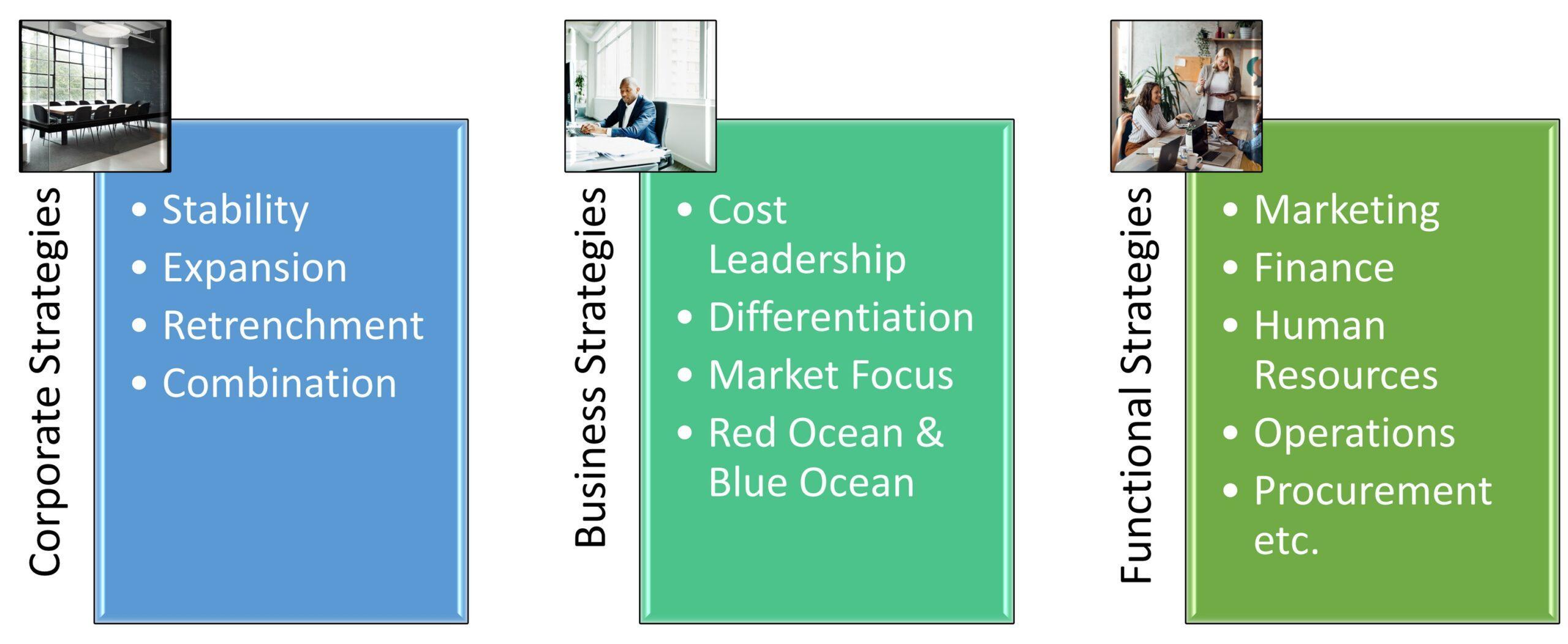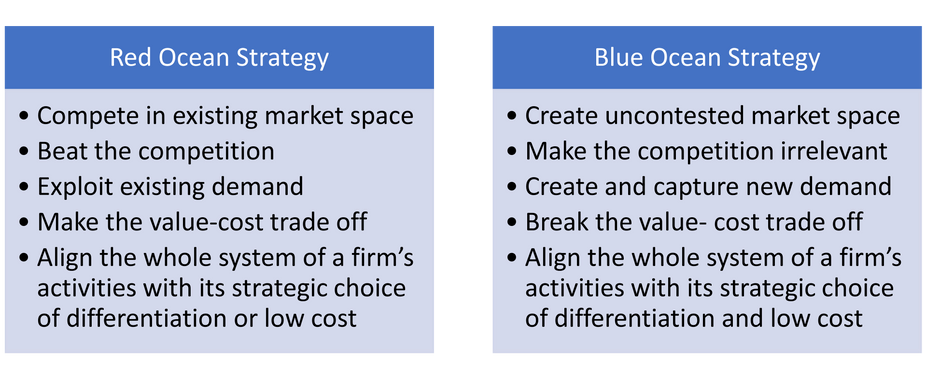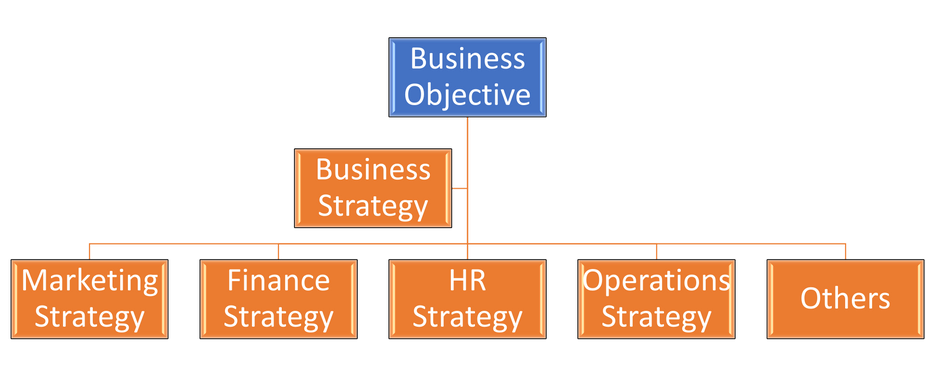Types & Levels Of Strategies In Strategic Management

Generally in large businesses, there are three levels of management and administration. Accordingly, the strategies are made at every level to achieve objectives at each of these levels. These three levels of business are;
Corporate Level – This is the headquarter of a business group. The group may be operating many companies and these companies operate independently most of the time, but the strategic intent, direction and corporate governance is controlled and disseminated from the corporate office. For example, Tata Group operates over 100 companies. Each of these companies is managed independently, but they all report to the corporate office. Accordingly, there are some strategies that are made at the corporate level to be implemented by every business in the group and are known as Corporate Strategies or Grand Strategies.
Business Level – This level is the management of a particular business of the group. For example Taj Hotels is an independent company, operating under Tata Group and is called a Strategic Business Unit (SBU). Many decisions are taken at this level that are specific to the the business in question and any & all the strategies formulated at this level are called Business Level Strategies.
Functional Level – The functional departments of a company are responsible for running particular areas of business such as marketing, finance, HR, operations, procurement etc. These departments are also called as business functions and the strategies made at this level are called as functional strategies.
Additional Reading – Tools Of Organizational Appraisal For Strategic Management
1. Corporate Level Strategies
Also popularly known as Grand Strategies, they are formulated at the topmost level in the corporate office of a business group. They are formulated for steering the group companies in line with the strategic intent of the group. These strategies also focus on inter SBU coordination and cooperation. A few prominent grand strategies are as follows;
1.1 Stability Strategy – Stability strategy is adopted by businesses in situations where the group does not want to take any risks and further wants to mitigate any existing risks. Such a strategy is employed during challenging times to ensure continuity of businesses. Times like recession, political instability, war, pandemic etc. call for such strategies. Mostly in stability strategy no major decisions are taken. Only internal restructuring between SBUs, to maintain stability, is carried out. In simple terms it is a “lie-low strategy”. Some of the approaches in stability strategy are seeking profitability, maintaining status quo and proceeding with caution.
1.2 Expansion Strategy – Just the opposite of stability strategy is the expansion strategy. The group orients itself towards an aggressive stance in order to cash in on the emerging opportunities within the group or externally. Various approaches in expansion strategy are diversification, internationalization, capacity enhancement, investment and business expansion. For e.g. Currently Tata group is expanding its aviation business by taking over Air India.
1.3 Retrenchment Strategy – Retrenchment strategy is an approach to either consolidate or to the revisit previous strategies of an SBU. Various options in retrenchment strategy are liquidation, divestment and turnaround. Some SBUs may be liquidated as they may not be aligned with the group’s strategic intent. The group may want to lower its shareholding pattern in some of its businesses to reduce its risk exposure. Finally, the group may decide to completely overhaul its underperforming SBUs to turn them around and make them profitable.
1.4 Combination Strategy – For very large business conglomerates, multiple grand strategies can be implemented simultaneously. Some sectors of the group’s businesses employ stability strategy, others expansion and the rest retrenchment. This happens because some business groups are so large that they operate multiple SBUs in each sector and these SBU clusters have totally different paradigms compared to their cousins operating in other sectors. Take for example, Tata group operates many SBUs in Hospitality and Aviation sector such as Taj Group of Hotels, Vistara Airline, Air Asia Airline, Ginger Hotels, Taj Air Caterers etc. These SBUs can be seen as cluster of SBUs. Another such SBU cluster operating in lifestyle sector is be Tanishq, Westside and Titan. These clusters are so large that they themselves act as a business group and call for a separate grand strategy because the environmental conditions for these clusters, both internal and external, are entirely different from other clusters. The pandemic has adversely impacted the hospitality and aviation businesses whereas the automobile businesses have seen positive growth. Accordingly, Tata Group may implement stability strategy in hospitality and aviation cluster and expansion strategy in its automobile cluster. Such an approach is called combination strategy where the group employs multiple grand strategies at the same time either in isolation or in combination with each other.
2. Business Level Strategies
Business level strategies or competitive strategies determine how a business should operate and compete in its competitive environment. These strategies are specific to a business or a company. These are described here as Porter’s Generic Strategies (Cost Leadership, Differentiation & Focus strategy) and Red Ocean & Blue Strategies.
2.1 Cost Leadership Strategy – It is a competition strategy in which those companies that have a very low cost structure, enjoy the competitive advantage. The low-cost structure could be due to efficient operations or access to cheaper raw materials. Whatever be the reason, low cost advantage results in the company’s ability to compete in the market with lower prices, thus gaining a sizeable market share. Walmart operates on cost leadership strategy.
2.2 Differentiation Strategy – When a company is able to offer differentiated products due to its proactive product research and development abilities, it competes in the market on the basis of the uniqueness of its products. This strategy keeps it differentiated from its competitors and maintains the company’s visibility in the market, thus creating and protecting its market share.
2.3 Focus Strategy – In this strategy, the company decides to highly customize its products to suit a specific segment of the market. This generally is a sub-segment or a micro segment, having very specific needs. For e.g. in the aviation market, there is a segment of customers who are always on very tight schedules and cannot afford to fly commercial airlines due to time constraints. On the other hand, these customers do not have any budget constraints on their travel. So such customers prefer air charter services where the entire aircraft is at their disposal. All air charter companies operate on focus strategy. They customize their product very minutely to appeal to a specific niche segment.
2.4 Red Ocean Vs. Blue Ocean Strategy – The names of these strategies are rather representative of their explanation. Red ocean literally means an ocean where a lot of blood has been spilt while blue ocean is pristine with turquoise waters, far away from the bloodshed. Figuratively though, these terms are represent of competitive orientation of different companies.

Accordingly, Red Ocean strategy involves competing in a closely contested matured market space. Blue Ocean strategy, on the other hand, creates an uncontested market space either by introducing new product concept for which there is no existing competition or by entering new markets that have not been already explored by competition. For formulating blue ocean strategy, the following approach is used, called the ‘Blue Ocean Canvas’.
Eliminate – Eliminate problems in the existing product offerings to make it better. For e.g. a mobile phone manufacturer may eliminate the need for not-so-environment-friendly-battery completely and replace it with solar energy power technology
Reduce – What cannot be eliminated must be reduced. If the cellphone heating problem cannot be completely eliminated, it must be reduced as much as possible.
Create – Create new and unique attributes for the product. For e.g. introducing a health monitor in a mobile handset.
Raise – If no new features can be created, try to raise the quality of features already created such as improving the camera resolution to unprecedented levels.
The more a company undertakes these steps, the more differentiated its product becomes, eventually creating a blue ocean strategy.
3. Function Level Strategies
These strategies are formulated by the invidual functions of an organization such as marketing, operations, HR, finance etc. Functional strategies are formulated and implemented so that each function can align itself with the business objective and deliver its contribution towards achievement of such objectives as identified by the business.

These strategies are intertwined and are executed in sync with each other. Coordination and cooperation are crucial for the successful formulation and implementation of the functional strategies. If implemented well, these strategies together lead to achievement of business objectives.
Suggested Reading – Environmental Appraisal – A Precursor To Strategy
“We are stubborn on vision, We are flexible on details” – Jeff Bezos







